I'm really excited to share some of my thoughts on OpenAI's latest advancements in text-to-speech and AI voice technology. As we delve into the capabilities of the new GPT-4o model, let's explore how it transforms our interaction with artificial intelligence.
The Evolution of OpenAI's Chatbots
OpenAI, like Speechify, has been a pioneer in the field of artificial intelligence, consistently pushing the boundaries of what's possible with large language models (LLMs). From the early days of GPT-3 to the more advanced GPT-4, each iteration has brought significant improvements in understanding and generating human-like text.
With the introduction of GPT-4o, OpenAI has taken a significant leap forward. This new model, also known as GPT-4 turbo, is designed to provide faster response times and higher accuracy, making it a powerful tool for real-time applications.
The GPT-4o model integrates seamlessly with the OpenAI API, offering developers a versatile platform to build innovative applications.
Real-Time Text-to-Speech and AI Voice
One of the standout features of GPT-4o is its advanced text-to-speech (TTS) and AI voice capabilities. These features enable real-time, natural-sounding speech generation, which can be used in a variety of applications.
Whether it's for creating chatbots, virtual assistants, or automated customer service representatives, the ability to generate human-like speech in milliseconds opens up a world of possibilities.
The AI voice functionality is not just limited to English; it supports multiple languages, making it a truly global tool. This is particularly useful for real-time translation services, where instant and accurate translation can bridge communication gaps across different languages and cultures.
Enhanced Features and Multimodal Capabilities
GPT-4o also introduces multimodal capabilities, allowing it to process and generate not only text but also images and other forms of data. This is a significant upgrade from previous models, such as GPT-3, and brings it closer to the vision of a truly versatile AI assistant.
With the integration of vision capabilities, GPT-4o can analyze and respond to image inputs, enhancing its utility in fields like medical imaging, autonomous driving, and more.
In addition to text and image processing, the model's voice mode offers a seamless way to interact with AI. Imagine asking your AI assistant to read out the latest news, transcribe meetings in real-time, or even assist in language learning by providing pronunciations and translations on the fly.
These functionalities make GPT-4o a comprehensive tool for various use cases.
Faster Response Times and Lower Latency
One of the critical improvements in GPT-4o is the reduction in latency. The model delivers responses in milliseconds, ensuring that interactions feel instantaneous and fluid. This is crucial for applications where speed and responsiveness are essential, such as customer service chatbots or real-time transcription services.
For developers, the higher rate limits provided by GPT-4o mean that applications can handle more requests simultaneously without compromising performance. This scalability is a significant advantage for businesses looking to deploy AI solutions at scale.
Integration with Popular Platforms
OpenAI has made sure that GPT-4o is accessible across different platforms and devices. For instance, the model can be integrated with Apple's Siri and Microsoft's Cortana, providing enhanced AI capabilities to these popular virtual assistants.
Additionally, with the availability of the OpenAI API, developers can easily integrate GPT-4o into their applications, whether they are building for web, mobile, or desktop environments.
For users on the free tier and ChatGPT Plus, the introduction of GPT-4o brings significant improvements in user experience. The new flagship model ensures that even free users can benefit from faster and more accurate responses, while ChatGPT Plus subscribers enjoy priority access and additional features.
We’ve mentioned that this model can integrate with Siri, but, if you haven’t heard already, Apple is in talks with OpenAi to build a tighter integration. Perhaps in the next version of iPhone coming up later this year? This is surely an exciting development and I can’t wait to see what entails.
Future Prospects and Innovations
As we look to the future, OpenAI continues to innovate and expand the capabilities of its AI models. With the upcoming release of GPT-5 and other advanced models, we can expect even more powerful and versatile AI solutions. The integration of generative AI with other modalities, such as voice and vision, will further enhance the model's capabilities and open up new possibilities for AI applications.
In the coming weeks, we anticipate more updates and new features that will further solidify OpenAI's position as a leader in the AI space. With contributions from leading AI researchers like Mira Murati and continuous advancements in neural network technology, the future of AI looks incredibly promising.
In conclusion, GPT-4o represents a significant milestone in the evolution of artificial intelligence. With its advanced text-to-speech, AI voice capabilities, and multimodal functionalities, it offers a comprehensive solution for various applications. Whether you're a developer, business owner, or an AI enthusiast, the new features and improvements in GPT-4o are sure to impress.
As we continue to explore the potential of AI, it's exciting to see how these technologies will shape our future interactions with machines. OpenAI's commitment to innovation and excellence ensures that we can look forward to even more groundbreaking developments in the years to come. Thank you for joining me on this journey into the world of GPT-4o and AI voice technology. Stay tuned for more updates and exciting advancements in the realm of artificial intelligence!
Speechify Text to Speech API
The Speechify Text to Speech API is a powerful tool designed to convert written text into spoken words, enhancing accessibility and user experience across various applications. It leverages advanced speech synthesis technology to deliver natural-sounding voices in multiple languages, making it an ideal solution for developers looking to implement audio reading features in apps, websites, and e-learning platforms.
With its easy-to-use API, Speechify enables seamless integration and customization, allowing for a wide range of applications from reading aids for the visually impaired to interactive voice response systems.





